Sumatran coffee bean elevation allusion meaning story price flavor description introduction
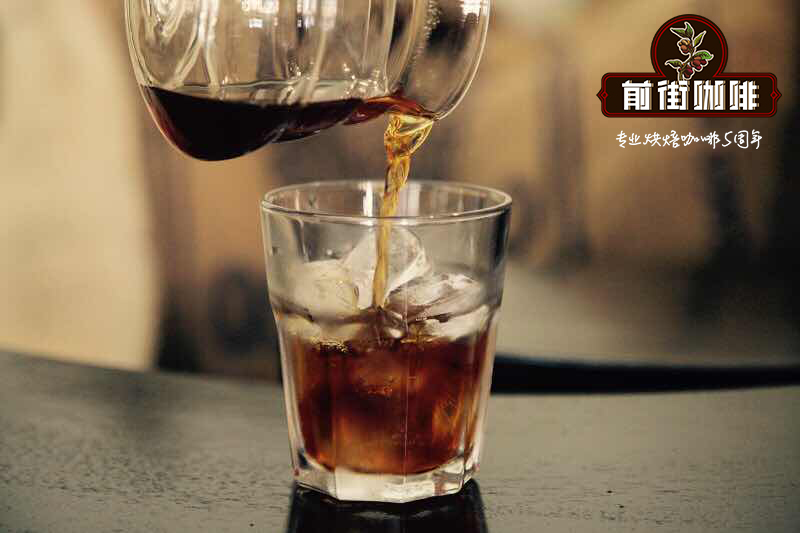
Professional coffee knowledge exchange More coffee bean information Please pay attention to coffee workshop (Weixin Official Accounts cafe_style)
Indonesia is the largest archipelago country in the world. Arabica coffee was introduced during the Dutch colonial period in the 18th century and began to be cultivated until modern times. It has become one of the top five coffee producers in the world in terms of output. The main producing areas are Sumatra, Java and Sulawesi. The northern part of Sumatra is relatively high in elevation, and Aceh Province, where Lake Tawar is located, and North Sumatra, where Lake Toba is located (Lindong is located), are two major Arabica coffee producing areas.
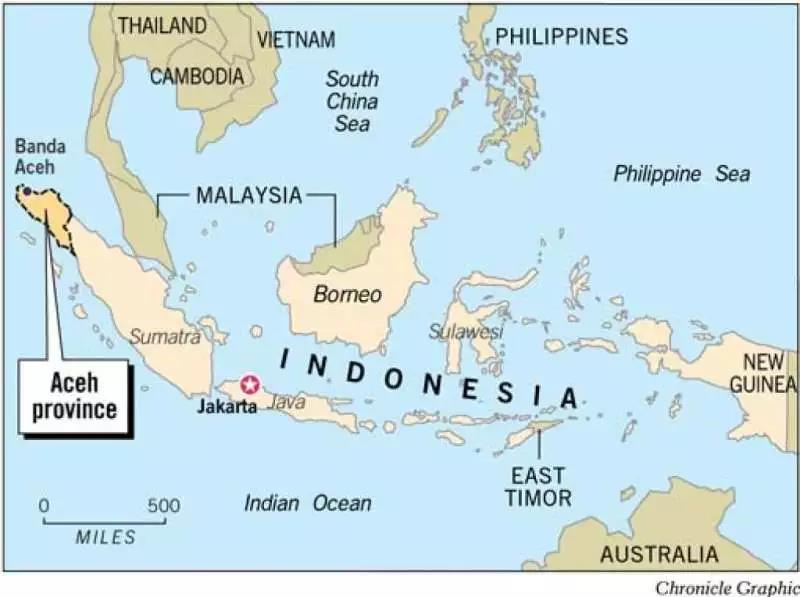
(1) Qianjie Coffee Aceh Sumatran Tiger Manning
Producing area: Aceh
Varieties: Caturra, Typica, Sidikalong
Soil: volcanic soil
Altitude: 1500m
Treatment method: wet planing method
| 01 | production area description |
Indonesia is an archipelago country, the main producing areas are located in Sumatra, Java and Sulawesi. The northern part of Sumatra is relatively high above sea level. Aceh, where Lake Tawa is located, and North Sumatra, where Lake Toba is located, are the main Arabica coffee producing areas. Lake Tawa is located in the Gayo Mountains in the north of Aceh province in Sumatra, across Indonesia on both sides of the equator, the humid tropical rain forest climate is rich in rainfall, and the fertile volcanic soil brings rich nutrients to coffee; however, due to the remote and inconvenient transportation, it was not until 1924 that coffee was grown, mostly with traditional shade and no pesticides.
Coffee is the second largest cash export crop in Aceh. It is estimated that there are about 60000 small-scale coffee farmers, and each person owns about 1 Murray 2 hectares of coffee planting land. Indonesia's traditional way of coffee trade is multi-point supply, starting from farmers, through multi-layer middlemen, slowly accumulate a large number of export goods. In the Indonesian coffee trading system, the direct trade of receiving goods from farmers and arranging for export through a single window is quite rare in Indonesia.
02 | handling method
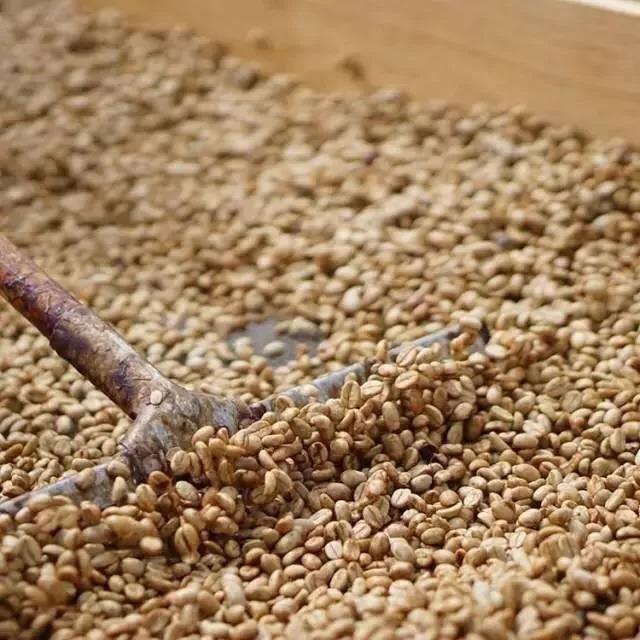
Wet planing, also known as wet shelling Wet Hulling, also known as Giling Basah in the local language, is a traditional Indonesian coffee treatment. Judging from the name alone, the wet planing method is very similar to the wet treatment (water washing treatment). However, the cup flavor of the two treatments is very different. The coffee treated by the wet planing method is usually mellow and strong, and the personality is very distinct.
Steps of wet planing treatment
① removes peel and pulp and retains parchment and mucous membrane.
② tank fermentation
③ washing off mucous membrane
④ with parchment is sun-dried for 2-3 days to 20-24% moisture content.
⑤ scraped off the parchment
⑥ dries raw beans to 12-13% moisture content.
⑦, prepare for exit.
Why do you use wet planing?
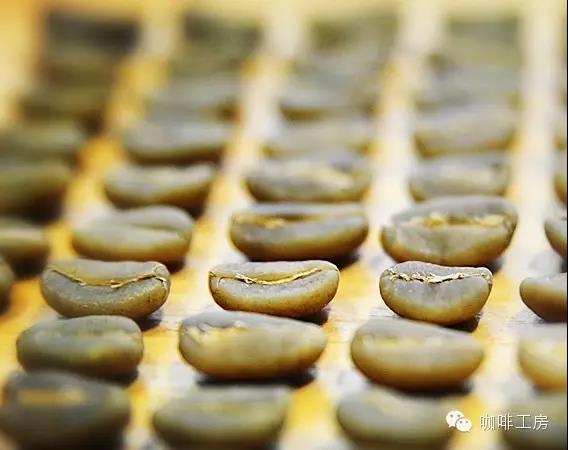
a. Climatic reasons
The tradition of using wet planing in Indonesia starts with the local weather. Humidity in Indonesia is between 70 and 90 percent all year round, typhoons continue, and in some areas, annual rainfall can reach as much as 2000mm. You know, raw beans are most afraid of Rain Water. How did Indonesia overcome such bad weather conditions to produce rich and mellow Mantenin coffee? That is to rely on wet planing.
In tropical climates, coffee takes an average of 2-3 weeks to dry. In such a humid climate in Indonesia, dry coffee has become a big problem. Coffee must take longer to dry, during which time the coffee still maintains a high humidity, making it easier for bacteria to soak into raw coffee beans.
Qianjie coffee found that in the ordinary washing process, the drying process is carried out with parchment, so as to protect raw beans from external damage to a certain extent. However, Qianjie Coffee notes that the wet planing removes the parchment for the final step of drying, so that the sun shines directly on the surface of the raw beans, causing the coffee beans to dry quickly, 2-3 times faster than washing.
b. economic performance
In the 17th century, Dutch colonists first introduced coffee to Indonesia. This group of colonists sought more and faster economic returns. Wet planing greatly shortened the time spent on the farm and greatly reduced the cost of labor. This coincides with the mentality of investors who pursue quick profits and reduce costs. This is also a reason to promote the wet planing method.
c. Defects and kuku kambing (Bauhinia)
When the parchment is removed by wet planing, the water content of coffee is still as high as 20-24%, while in general treatment, the water content of coffee is reduced to 10-12% before shelling. In the "semi-dry" state, parchment will adhere to the surface of raw beans, removing parchment is more difficult than "fully dry", and the shelling process requires more friction.
But on the other hand, "semi-dry" raw coffee beans are very fragile at this time, far less hard than "fully dry" raw beans, so beans are more likely to be squeezed and form a small gap. This is what we often call horseshoes or sheep's hoof beans (locally known as kuku kambing).
The super speed of wet planing also causes Manning to have higher defects. Employees will be arranged to carry out manual selection of defects in the processing plant, usually with DP (second hand selection) and TP (third hand selection). After three times of hand selection, Mantenin will be better than the second hand selection in the defect rate.
03 | Analysis of raw beans
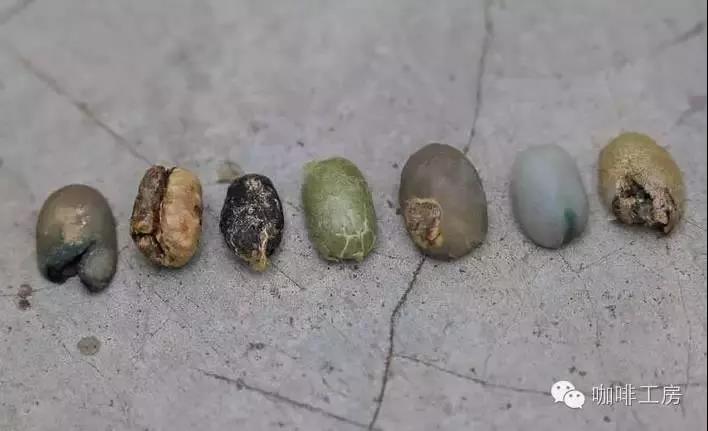
[Qianjie Coffee Indonesian Tiger Manning]
The varieties of Qianjie coffee Indonesian tiger Manning are Kaddura, iron pickup and Sidikalong.
Kaddura tastes sour with lemon or citrus taste and is not as sweet as iron pickup and bourbon in terms of sweetness, because Kaddura's sweetness depends on the number and dose of fertilizer applied by growers, and has high production capacity, but continuous fertilization and pruning are necessary to maintain production capacity, so the trees are short and branched. Although production capacity has increased, production is still limited because of the two-year harvest period and the high cost of care.
Iron pickup is the closest variety to the original species. The bean shape is slightly longer, like an elongated egg, known as Arabigo or criollo in Central America. There is a clean citric acid taste, sweet aftertaste, low resistance to leaf rust, making it not easy to take care of, low seed setting, coupled with a long harvest period (harvest every two years), the yield is not much.
The tiger Mantenin of Qianjie coffee has a round body, yellowish green, better uniformity and high moisture content. The goal of Qianjie coffee roaster is medium-deep roasting, in order to erase too much sour taste and improve its mellow thickness and balance.
In the first batch of baking, the lower bean temperature is relatively high, the bean temperature is 200 degrees, and the firepower is also relatively high. In the baking process, because the elevation of the bean is only medium and the bean quality is very soft, in order to remove the excess gouache and avoid being sour due to lack of dehydration, the baking method of prolonging dehydration time and reducing fire is adopted to adjust the firepower before the bean enters the yellowing point, the dehydration is finished and the first explosion is completed to avoid burns on the bean surface, and choose to come out of the oven 4 minutes after the end of the first explosion and 20 seconds before the second explosion to prolong the caramelization reaction time. Reflect its high quality cleanliness and sweetness.
Roaster Yangjia 600g semi-direct fire
Enter the pot at 200 degrees Celsius, adjust the firepower to 160 degrees after opening the throttle for 30s, keep the throttle unchanged, the temperature return point is 1 "45, keep the firepower, the bean watch turns yellow in 5: 18" seconds, the smell of grass disappears completely, enter the dehydration stage, the firepower is reduced to 140 degrees, and the throttle is adjusted to 4.
7'30 "dehydration completed, firepower reduced to 140 degrees, 8km2 39. 55 "when the bean table appears ugly Hu wrinkles and black markings, the smell of toast obviously changed to the smell of coffee, can be defined as a prelude to an explosion, at this time to listen clearly to the sound of an explosion point, to 9: 00" to start an explosion, adjust the firepower to 110 degrees, the throttle should be fully opened 5 (the firepower should be very careful, not to be so small as to be free of bursting sound), the development of 400s "after an explosion, 203 degrees pot.
This tiger manning is well-balanced and clean, with obvious flavors of cream, dark chocolate and nuts.
(2) Golden Manning
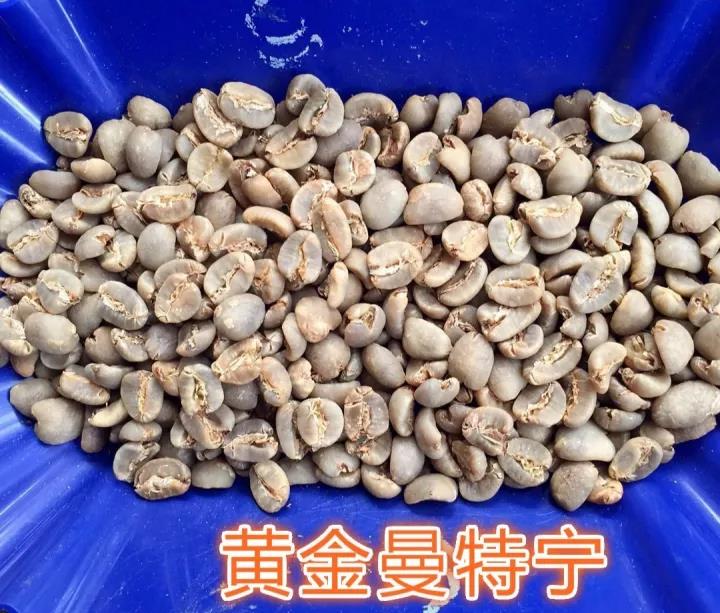
| 01 | production area profile |
The main producing areas of Indonesian coffee are Sumatra, Java and Sulawesi, of which "Manning" from Sumatra is the most famous.
Mantenin is also known as "Sumatran Coffee". Gayo is mostly produced in North Sumatra. Lake Tawa, which is dominated by ateng varieties, can be called Aceh Coffee or Lake Tawa (Tawar lake) Coffee, and the area between Lintong and Lake Toba lake in South Sumatra can be called Mantenin. Lindong is the producing area of Mantenin, and the best mantenin varieties have four varieties: Sidikalang, Bergendar, Siborong borong and Telok Sanggul.
Lake dopa, located in the central part of North Sumatra, was moved northward to the Lake dopa area by Dutch colonists in 1888, creating the modern Mantenin legend.
Lake Tawa is located in the middle of the Aceh Special Administrative region. Located at the northern tip of Sumatra, the area is less than 1/10 of Lake dopa. However, the quality and output of coffee have surpassed that of Lake dopa in recent years.
The Gayo Mountains are located in the Aceh-producing region of the northern province of Sumatra, where most of the coffee farmers working in Gayo are local farmers. The word "Gayo" comes from the tribes of Aceh in Indonesia. This area has ideal growth conditions, long history and culture and unique flavor. The region widely uses organic methods to grow coffee without chemical fertilizers, and is considered to be the world's green coffee production region. Therefore, Gayo coffee is often called green coffee and Gayo organic coffee.
What is Golden Manning?
When it comes to Golden PWN, the acronym is often mixed with the name of Manning Coffee, which is actually a company's acronym Pwani Coffee Company.
This company is a very famous local coffee acquisition company in Indonesia, mainly buying Mantenin Coffee. It has acquired almost all the best producing areas in Indonesia, so most of the beans produced by PWN are unique boutiques. Gold Mantning is the product produced by this company. After the acquisition of raw beans, the beans are selected by hand to select the full and flawless beans. Finally, these beans can be divided into Golden Manning as if they had gone through the draft.
However, PWN registered the gold manning as a trademark, that is to say, only the gold manning produced by PWN can be regarded as the real "golden manning". Many of the beans on the market that are not made by PWN and hang the gold manning brand should actually be called boutique manning.
"Golden Manning" is just a product named by the company.
Qianjie coffee gold Manning uses the same wet planing method, wet planing flavor, except for those slight differences, we generally think that wet planing beans have the taste of soil, tobacco and chocolate, and the sour taste is called "low acid". Mellow and very dull
Low acid comes from a shorter, weaker fermentation process and a longer drying time, if you forget the wet plane fermentation, turn back and have a look. As for the "earthy taste" of wet shaved beans, there are different opinions. Some people say that this is related to the beans selected in the wet planing-related producing areas (Tim & Kadim: with Rob pedigree), some people say that this is the result of the organic interaction between raw beans and the outside world, and some even say that it is because there are too many defective beans! Of course, there are a lot of...
03 | Analysis of raw beans
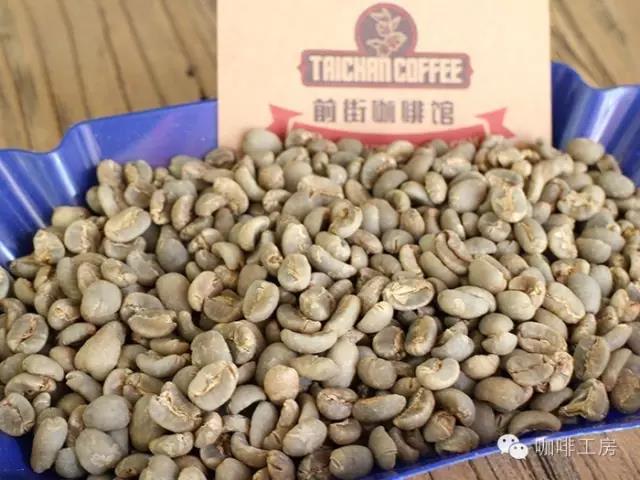
Gold manning Gold Mandheling raw beans
Golden Manning
Origin: Sumatra, Indonesia
Treatment method: wet planing method
Variety: iron pickup
Baking degree: medium to deep
Qianjie coffee chose to add beans before the second explosion, retaining a little soft acidity. Taste high sweetness, rich and mellow, flavor: baked toast, pine, caramel, cocoa, slightly herbaceous soil flavor.
Sumatran coffee is a wonderful presence in the boutique coffee system. You see, the famous Mantenin, in fact, it is not the name of the producing area, nor is it the name of coffee beans, and even the sources of its beans are so messy.
Ateng--
It is a hybrid between Arabica and Robusta, with several subtypes, widely cultivated in Sumatra and other Indonesian islands. To put it bluntly, it is a branch of Catimor (Katim). Ateng is a local name.
Djember--
Djember is a place name in Sumatra checked by Baidu. It looks like a mystery, but in fact, the breed is Smuri 795. Because the bean seed was spread to the island by Jember Coffee Reseach Center, the local people call it this name.
What is Smur795? It was developed by Indian botanists crossing the tin card mutant Kent (Kent) with Smuri 288.
What is Smur288? It is a natural hybrid of Arabica and Liberica.
TimTim--
Timor Hybrid, which translates to East Timor hybrid, that is, the hybrid of Arabica and Robusta. The familiar Catimor is hybridized with it again.
Tim Tim---- horse face Manning longberry
Tim Tim is a bean from Indonesia. Because of its long shape, many people call it Ma Mian Dou, and some people call it long Manning. In fact, tim tim is not a purebred bean, but a natural cross between Arabica coffee and Robusta coffee, which was discovered on the island of timor in the 1940s and cultivated for its natural disease resistance. In America this variety is called Hybrido de Timor, or Tim Tim for short, and in Indonesia it is also called Bor Bor.
04 | Baking analysis
Gold manning is a raw bean with more moisture, which has a higher moisture deviation with sun beans, so pay special attention to dehydration. Raw beans with high moisture content can be tasted and put into raw beans. Immediately close the throttle, steam for 30 seconds and then open to 3, until the color of raw beans becomes light green or white, the throttle opens to 4, explodes and then opens to 5 (maximum).
Qianjie coffee is recommended to record the data before roasting, the water content, density, origin, treatment method, ambient temperature and humidity in the baking room, etc., and plan your baking curve. Recording the chemical and physical changes during the baking process will help you better understand the final baking results and help improve the baking curve.
Bake the curve:
Put the furnace temperature to 200 degrees Celsius, adjust the firepower to 160 degrees after opening the throttle for 1 minute, keep the throttle unchanged, bake to 5: 40 ", the temperature is 148 degrees, the bean surface turns yellow, the smell of grass disappears completely, the dehydration is completed, the firepower is adjusted to 140 degrees, and the throttle is changed to 4.
In the 9th '40th minute, ugly wrinkles and black markings appear on the bean surface, and the smell of toast obviously changes to the smell of coffee, which can be defined as a prelude to an explosion. At this time, listen carefully to the sound of the explosion point, start to explode at 9: 54 ", turn the firepower down to 60 degrees, and the throttle is fully open (adjust the firepower to be very careful, not so small as to be free of bursting sound), and put the pot at 204.5 degrees.
Coffee cup test report on Qianjie:
Gold mantenin tastes cleaner than Lindong mantenin. Its original herbal, earthy and woody flavors are almost gone, but caramel is more sweet and fruity is brighter and more elegant. In general, Lin Dong Mantenin had better bake until the second explosion before coming out of the oven, which can effectively reduce the miscellaneous smell, but the gold Mantenin has good transparency and sweetness before or after the second explosion, and the baking interpretation space is wider.
(3) Old Manning
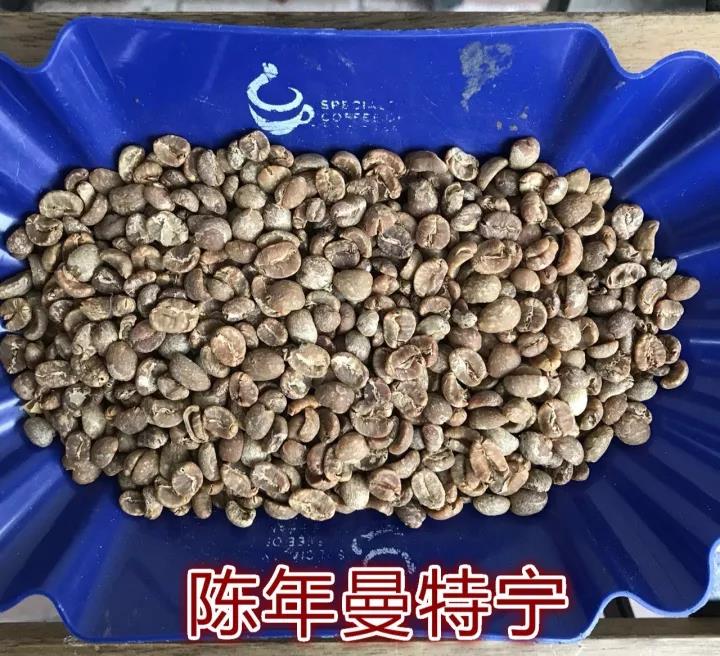
| 01 | production area profile |
The most famous coffee producers in Asia are the islands of Malaysia: Sumatra, Java and Gary Mann. Sumatra manning coffee from the Indonesian island of Sumatra is the most famous, with two famous names, Sumatra mantenin DP first class and collection Sumatra mantenin. Sumatra Mantenin DP has a long aftertaste, with a hillside fragrance, which is unique to the earthy taste of the primeval forest.
The main producing areas of Indonesian coffee are Sumatra, Java and Sulawesi, of which "Manning" from Sumatra is the most famous.
Lintong is also known as Sumatran Coffee, Lake Tawa at the north end can be called Aceh Coffee or Lake Tawa Coffee, and the area between Lindong Coffee and Lake Toba can be called Manning.
Mainly from two producing areas:
One is the Aceh producing area, which includes five producing areas: Tawa Lake, Gaiyou Mountain, Gaiyou nationality, Yaziman and Takangong Manning.
The other is the producing area of North Sumatra, which is composed of four producing areas: Lake dopa, Lindong, Mandainin and Badak.
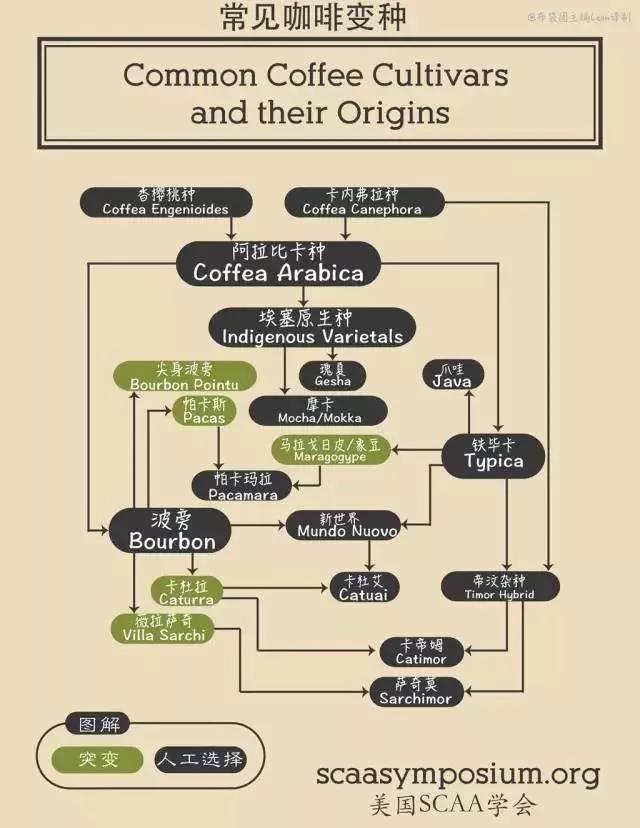
Aged bean treatment
Old coffee beans do not mean that coffee beans are not allowed after they have been kept for a long time, because coffee beans will rot after they have been kept for a long time, changing from fresh cyan to white, then to yellow, becoming dull, and even growing worms. Like aged wine, raw beans must be properly treated and stored for a long time before they can be called real [aged coffee].
The so-called old coffee beans (Aged bean) mean:
The natural aging of raw beans can be achieved by prolonging the storage time (usually 2-3 years).
These changes include weakening of acidity, color change and thickening of beans.
The storage environment must be cool and ventilated.
Because the storage environment is dark and the storage time is long.
Old coffee is always hard to take off.
Complex smells like musty or commonly known as sacks or leather--
02 | Analysis of raw beans
Properly stored coffee beans will change their taste and shape, such as reduced acidity, dark color and lack of moisture, thicker and thicker taste, sweetness with honey flavor, and some of the defects that originally belonged to raw beans become less obvious. Because the storage environment is dark and for a long time, aged coffee is always difficult to get rid of the complex flavor such as musty taste or commonly known as sack or pig and so on.
Aged beans (Aged bean) must be strictly and carefully controlled during storage, regularly flipped evenly, humidity and ventilation adjusted to prevent moth or mildew.
Generally speaking, the storage of aged beans does not take place in the producing area or manor, but is the business behavior of raw bean dealers or brokers.
Coffee beans that are stored correctly
Will change their taste and appearance.
For example, the acidity weakens, the color is dark and lack of moisture.
The palate is thicker and thicker, with honey aroma in sweetness.
Some defects that originally belonged to raw beans have also become less obvious.
03 | Baking analysis
The old Mantenin looks a little ugly, the baptism of the years will wear away the sour taste of Mantenin, increase its purity, and make the medium-depth taste more round.
Because Mantening raw beans have high density and low moisture content, special care should be taken in all stages of firepower adjustment. Manning coffee should be careful not to scorch the oil on the surface of the raw beans.
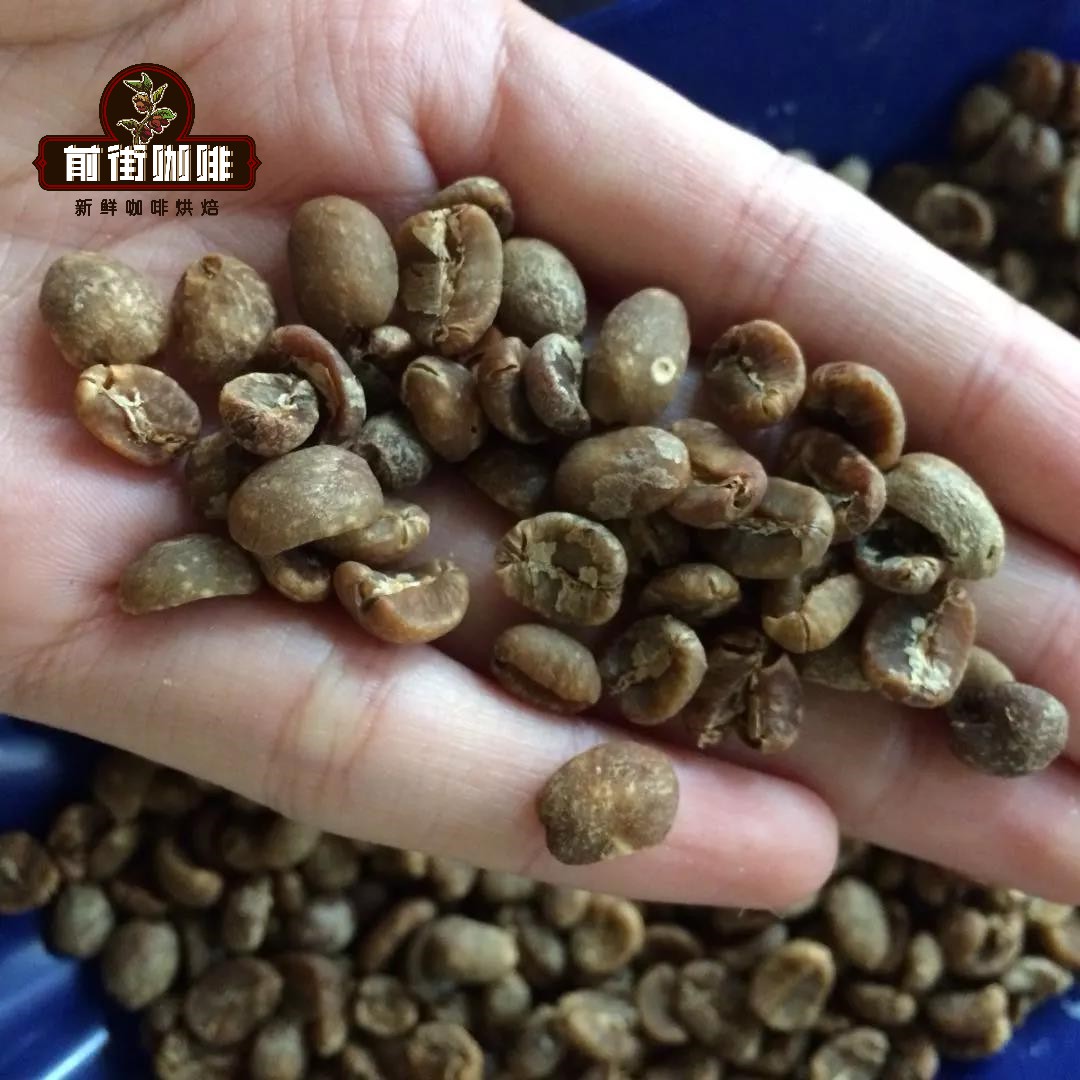
Yangjia 800N, raw bean 550g, specific operation:
Put the furnace temperature to 200 degrees Celsius, set the throttle to stew for 1 minute, adjust the firepower to 160 degrees, the throttle remains unchanged, adjust the firepower to 165 degrees, drop to 140 degrees, bake to 5: 35 ", the temperature is 146 degrees, the bean surface turns yellow, the smell of grass disappears completely, dehydration is completed, and the throttle is open to 4.
In the 9th minute, ugly Hu wrinkles and black markings appear on the bean surface, and the smell of toast obviously changes to the smell of coffee, which can be defined as a prelude to an explosion. At this time, listen clearly to the sound of an explosion point, to 9: 30 "start an explosion, adjust the firepower to 80 degrees, the throttle is fully open 5 degrees (the fire power should be very careful, not to be small to no cracking sound) 40 degrees, 194 degrees when the fire drops to the pot at 197.4 degrees.
Qianjie coffee is recommended for brewing:
Filter cup: KONO filter cup
Water temperature: 88 degrees
Degree of grinding: small Fuji degree of grinding 4
Cooking method: the ratio of water to flour is 1:14, 17g powder, 25g water for the first time, steaming for 30s, and 238g water for the second time. The extraction time is about 2:30 seconds.
Analysis: there are not many ribs at the bottom of the Kono cup, and the filter paper clings to the filter cup to achieve the purpose of limiting air flow, which can make water and coffee powder have longer contact soaking time in the filter cup and ensure the extraction time and extraction rate of rough grinding. In this way, the coffee powder can be fully extracted, enhance the mellow taste and make the taste more concentrated.
Flavor: well balanced, clean, thick and solid on the palate, with a long dark chocolate finish.
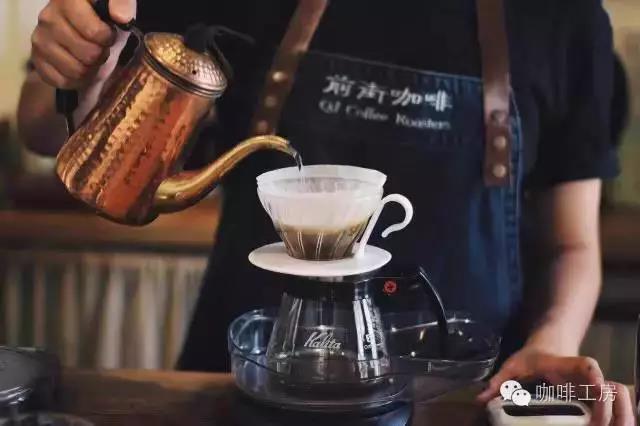
Indonesia Sumatra Mantenin boutique coffee beans Indonesia PWN gold Mantenin black coffee beans G1 washed imported single boutique fresh baking free delivery
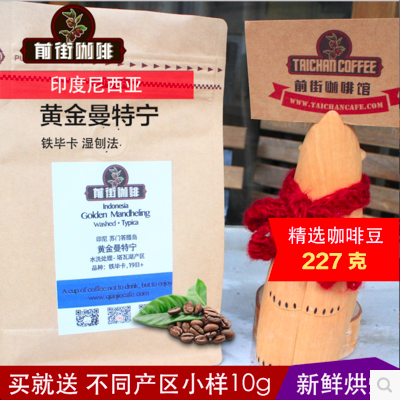
Purchase link: https://item.taobao.com/item.htm?spm=a1z10.3-c.w4002-15673140470.9.5c9c6d0fNyL16O&id=540335271875
Important Notice :
前街咖啡 FrontStreet Coffee has moved to new addredd:
FrontStreet Coffee Address: 315,Donghua East Road,GuangZhou
Tel:020 38364473
- Prev

The caffeine content of Yega Sheffield introduces the flavor characteristics of G 1 coffee beans.
At present, commercial low-caffeine coffee uses dichloromethane solvent or activated carbon and water to extract caffeine from raw beans, but the aroma and oil of coffee will be lost with caffeine. Unfortunately, harmful chemical solvents remain in coffee, so artificial decaf is neither delicious nor healthy. Han Huaizong's essence
- Next
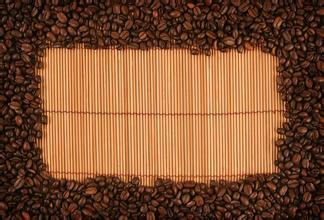
Taste characteristics of Katim Coffee introduction to quality beans treated with sun water and grinding degree
Katim Coffee Taste treatment Katim, as a variety that has taken root in Yunnan, I love and hate it. Although it has many shortcomings and is not suitable for planting at high altitude at all, there is still a lot of room for improvement and it has become better and better. How to find more of its advantages and make use of it is the most important. The pursuit of shallow baking in fashion
Related
- Detailed explanation of Jadeite planting Land in Panamanian Jadeite Manor introduction to the grading system of Jadeite competitive bidding, Red bid, Green bid and Rose Summer
- Story of Coffee planting in Brenka region of Costa Rica Stonehenge Manor anaerobic heavy honey treatment of flavor mouth
- What's on the barrel of Blue Mountain Coffee beans?
- Can American coffee also pull flowers? How to use hot American style to pull out a good-looking pattern?
- Can you make a cold extract with coffee beans? What is the right proportion for cold-extracted coffee formula?
- Indonesian PWN Gold Mandrine Coffee Origin Features Flavor How to Chong? Mandolin coffee is American.
- A brief introduction to the flavor characteristics of Brazilian yellow bourbon coffee beans
- What is the effect of different water quality on the flavor of cold-extracted coffee? What kind of water is best for brewing coffee?
- Why do you think of Rose Summer whenever you mention Panamanian coffee?
- Introduction to the characteristics of authentic blue mountain coffee bean producing areas? What is the CIB Coffee Authority in Jamaica?

